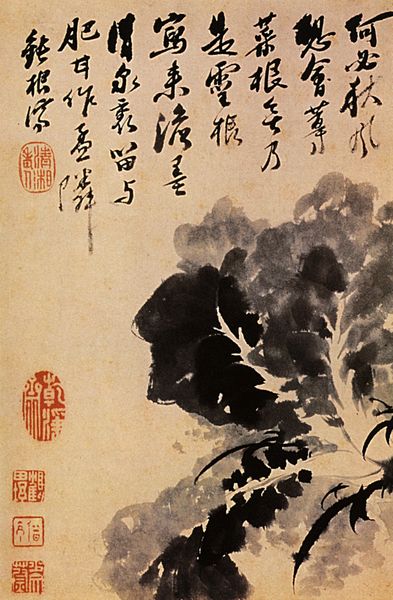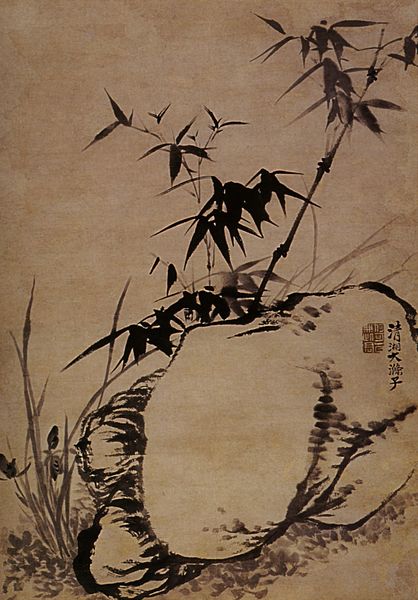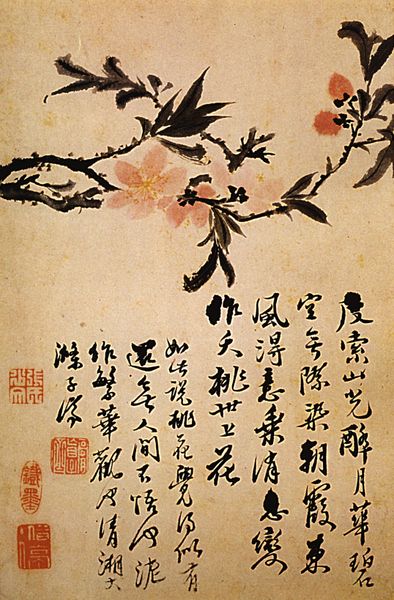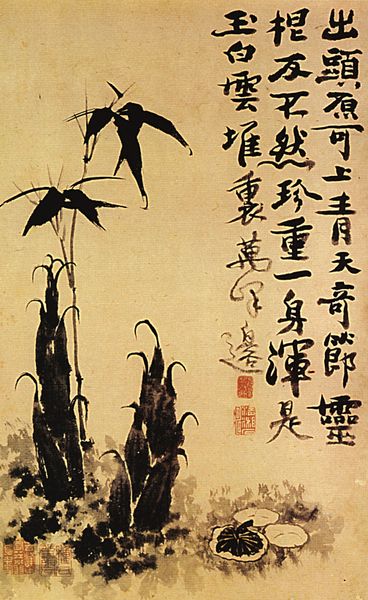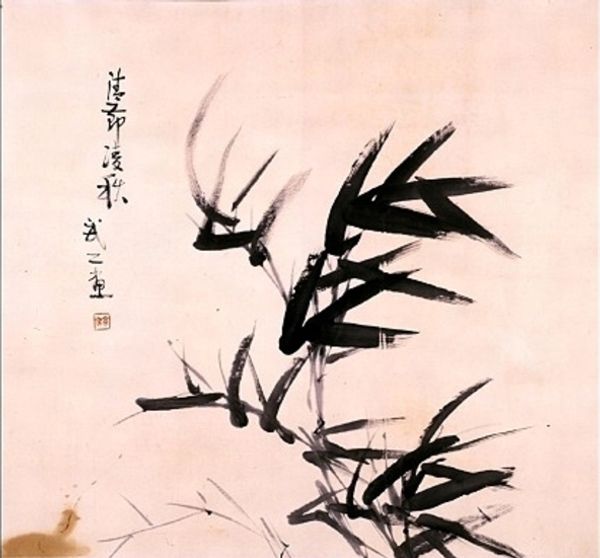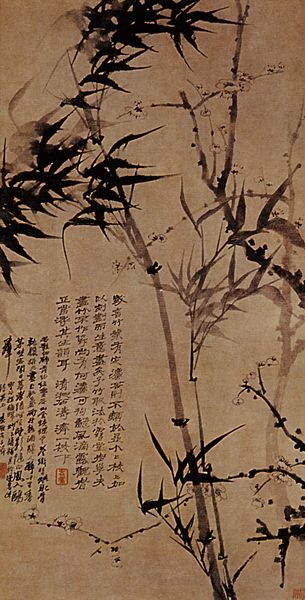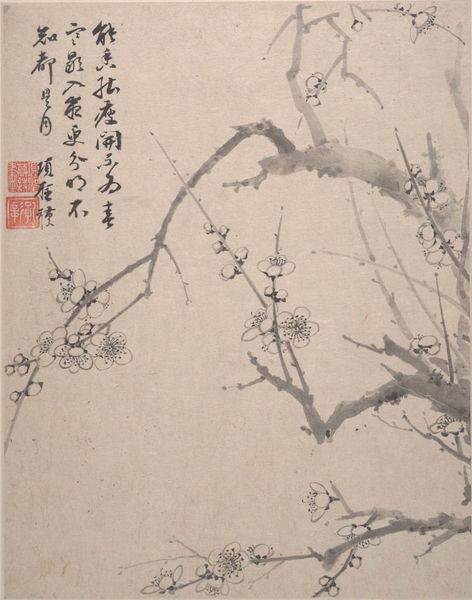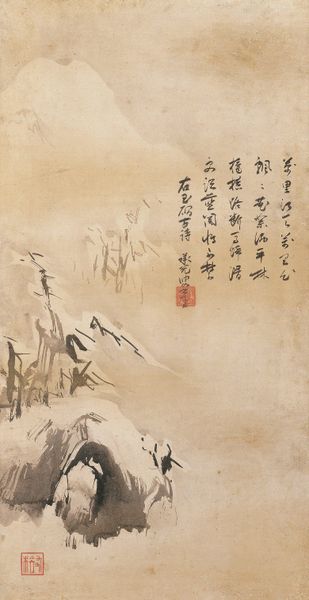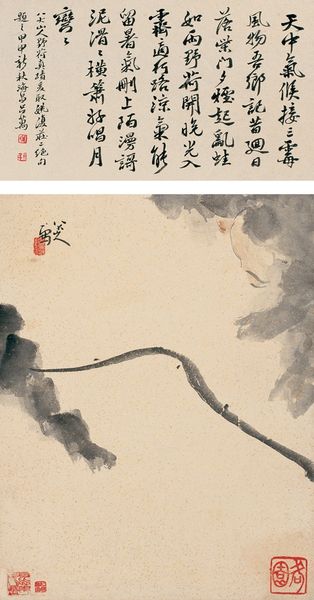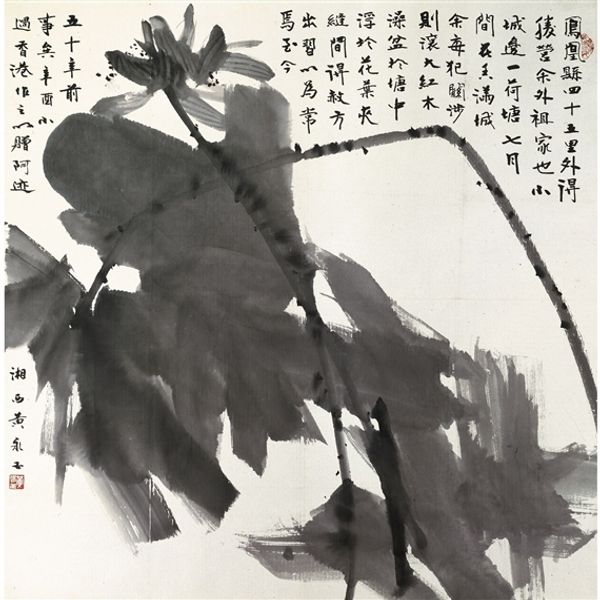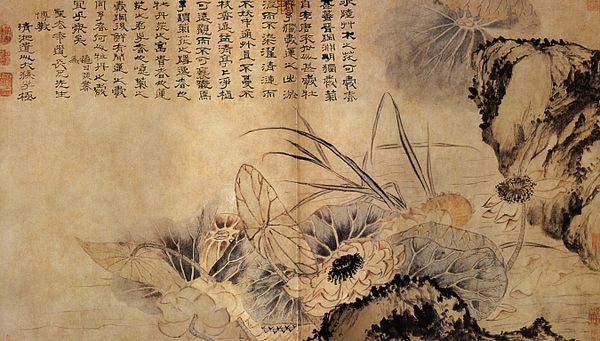
#
hand lettering
#
flower
#
hand-drawn typeface
#
fading type
#
plant
#
calligraphic
#
typography style
#
watercolour bleed
#
watercolour illustration
#
botany
#
experimental typography
#
sketchbook art
#
watercolor
Dimensions: 29.9 x 20.8 cm
Copyright: Public domain
Editor: Here we have Shitao's "Vegetable Gardens," created around 1707. It’s a delicate work on paper. What strikes me most is how earthy and raw it feels, despite the elegant brushstrokes. What stands out to you about this piece? Curator: What interests me is how Shitao intertwines agricultural production with artistic expression. The very act of depicting these "vegetable gardens," the *means* of sustenance, raises questions about labor and materiality. How does Shitao, an intellectual, engage with this everyday scene, so vital yet easily overlooked? Editor: That's a great point. It's interesting to consider his position as someone observing rather than directly participating in that labor. Curator: Precisely. The materials themselves - ink, paper, brush - were products of a specific kind of labor, supporting a class divide. We should consider what the paper represents here as commodity, too. How does this impact our reading of the imagery used here, seemingly “humble” and “natural” when its origin suggests so much more? Editor: I see what you mean. It's easy to get lost in the beauty of the painting, but it is good to stop and recognize how interwoven its creation is with systems of production. I never thought about the materiality and production that would support something that looks quite organic and natural. Curator: These paintings circulated within particular social strata. Were they displayed in a scholar's studio? Given as gifts between officials? What social purpose did representations of simple vegetable have, in elite culture? Thinking this way allows us to deconstruct the art, challenging ideas of purity. Editor: This gives me a new framework of how I might study material in its context, to examine art and history through a material lens.
Comments
No comments
Be the first to comment and join the conversation on the ultimate creative platform.
